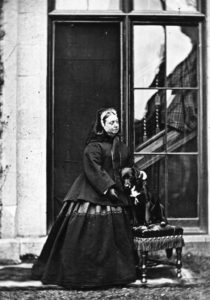Black is modest and arrogant at the same time…But above all black says this: I don’t bother you – don’t bother me Yohji Yamamoto
You can wear black at any time. You can wear it at any age. You may wear it for almost any occasion. Christian Dior
1
Black will be in fashion until a darker color is invented
Rebel without a Cause with James Dean was one of the most influential films of the 1950’s. This film changed the way young men appeared in Western society. Individuals like Marlon Brando, Elvis Presley, and last not least James Dean were style-forming newcomers who had very much in common. They were more sexier, more confused, more feminine, more demanding and more ambiguous than the previous generation of “normal” young Hollywood actors. Most notably; they were dressed in a way never seen on screen before.
They wore black leather jackets which covered their bodies literally speaking like a black animalistic skin; expressing partly something beastly good and partly something beastly bad. So that, by generous contemplation, nothing else can be

assumed except that the animalistic nature of this outfit certainly must rub off on the heart, and not just on the heart. Looking back, it was this remarkable jacket that created iconic role models for heroic activities beyond good and evil.
The former jacket for rebellious young men, however, has no longer any subversive significance today. It has become a get-up for people trying to give the impression

of being different than others. One can safely say that the black leather jacket nowadays is nothing but a gear for tamed fashion puppets. It is like a black straitjacket for people seriously believing that an appearance in black leather can make the difference in a society, where almost everyone and almost all the time is dressed in black.
In this sense, black is indicating the admirable courage of people brave enough to admit the fact that they simply don’t dare to wear anything else except black. This despondency, on the other hand, is supported by the fashion industry which is permanently praising black in a truly messianic manner as the culmination of taste and style. What necessarily brings up the question why black, although it is not a color at all, enjoys the top position in the hierarchy of fashion colors. This is astonishing since most people in polls about their favorite color claim that it is either blue, red or yellow.
However, black clothes have been through the course of time always something very special that only a few could afford to wear in the past. To produce an intense black used to be laborious and costly. Therefore, if in the early Middle Ages monks and priests were dressed in black, then certainly not in order to reflect self-critically the darkness of admittedly sinful souls. The purpose of their black robes was to distinguish themselves from the uncolored woolen fabrics of ordinary people. Black-robed clerics expressed nothing but social superiority and aesthetic sophistication.
One can observe here an eternal principle of fashion. The meaning of fashion is to create preciousness of ones external appearance. It goes without saying that fashion can’t provide this service for free. Black clothes used to be the most expensive, but at the same time easiest way into the eyes of others.
2
Black – The Bridge Between Eroticism And Death
All discussions about black clothing must remain superficial as long as the symbolic meaning of black is ignored with regard to eroticism and death. In terms of Christian symbolism, to start with, black signified death and mourning since the late Middle Ages. However, it was the Queen Victoria of Great Britain (1819 – 1901) who had established black as a binding mourning dress code. She never wore anything but

black after the early death of her beloved husband Prince Albert. Queen Victoria became the ultimate role model for all women in the Western world who avoided social life after the deaths of their husbands. Last not least in order to keep any thoughts on female attractiveness at distance.
Significantly, it is still considered as unseemly, when young women immediately after the funeral of their husbands indicate to be on the market again. Also, it appears as if there is something wrong with men devoting themselves to erotic thoughts at the sight of young widows during the funeral of friends or colleagues. It seems within this context certainly not far fetched to claim that someone grabbing a mourning woman’s breast must be plain crazy. This, however, was exactly what the 20-year-old Marcel Reich-Ranicki did. It happened in an apartment in the Warsaw ghetto in 1940, in which a girl cried bitterly for her father, who just had hanged himself. The most influential 20th century German literary critic writes in his biography:
I could not help to stroke the head of the crying girl and kiss gently her tears…But all of a sudden I touched her and grabbed her breast. She winced, but she did not resist…
This confession is somewhat hard to digest. One wonders what went wrong. On closer inspection, however, there’s absolutely nothing wrong with it. On the contrary, what the young man did was the most normal thing he could do. Why? Simply because there’s only one thing we really want when being confronted with the presence of death: to be alive! And, logically, the desire to be alive is in itself not thinkable without erotic feelings. Essentially, eroticism is the strongest possible expression of the will to be alive. This means that eroticism indicates at the same time the will to overcome death.
At this point a symbolic connection between mourning and erotic feelings is close at hands to observe. The bridge connecting these states of mind is the color black. Black, as we perfectly well know, is not only associated with death and grief but with erotic open-mindedness as well. When mourning attire for women had become more fashionable during the 19th century people started to notice that the color black made young widows erotically attractive. Robert de Valcourt, for instance, wrote in 1855:
Black is becoming; and young widows, fair, plump, and smiling, with their roguish eyes sparkling under their black veils, are seducing.
It may seem tactless, but one could be tempted to agree upon to see in Jaqueline (Jacky) Kennedey (right) the most seductive widow of all times. When looking at

this photo within the context mentioned above, a both abysmal and frightening dimension comes in sight. Philosophically speaking, every look at women with erotic thoughts in mind is necessarily always a look in the rear-view mirror back to the origin of ones life. Moreover, looking at women with erotic feelings is at the same time a subconscious forward-looking departure from life.
How is it possible to make such a devastating claim? I know it sound grotesque, but sexual intercourse is for men the symbolic anticipation of their burial. A burial implies that one returns back to the never ending breeding ground of the terra mater. Consequently, it is not coincidental when womb and grave have been considered as identical in various ancient Mother Religions. Also, the sociologist and philosopher Georg Simmel points out in his “Transcendence of Life” the relationship between conception and death: “…as if there is a connaturality.” With regard to fashions obsession with black the relationship between the end and the origin of life is expressed through things such as widow’s weed and Coco Chanel’s “little black dress”.